The NVIDIA GeForce GTX 1080 Preview: A Look at What's to Come
by Ryan Smith on May 17, 2016 9:00 AM ESTGaming Performance, Power, Temperature, & Noise
So with the basics of the architecture and core configuration behind us, let’s dive into some numbers.
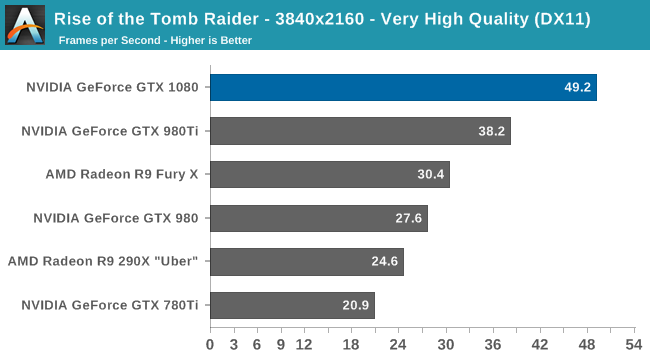

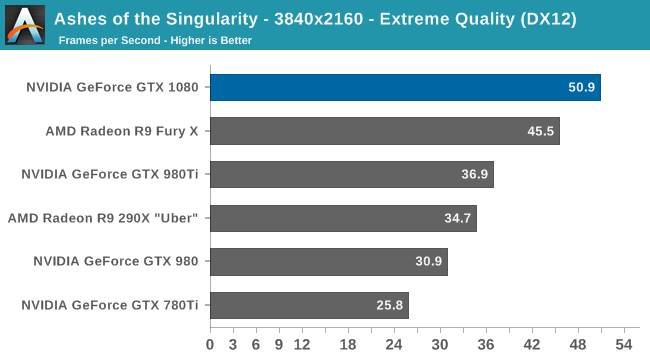

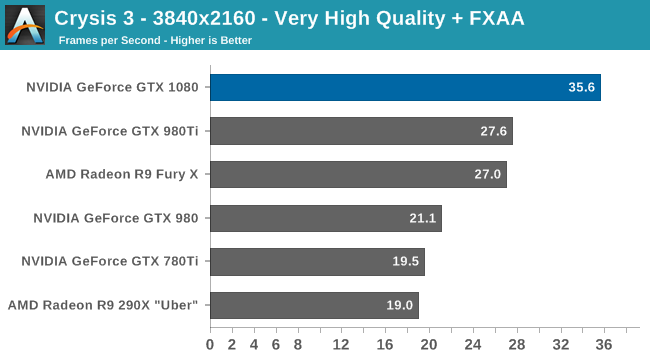
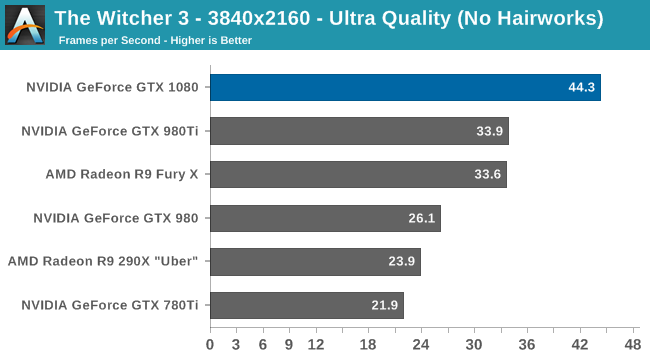
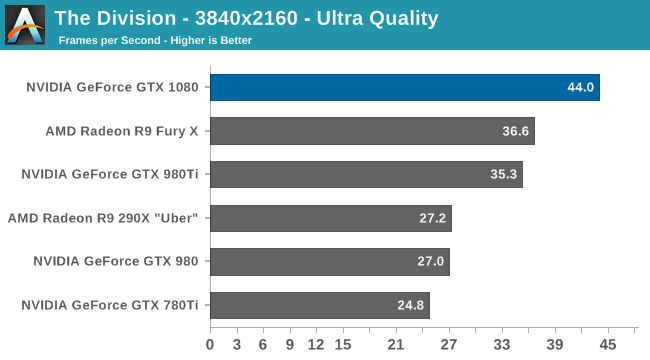
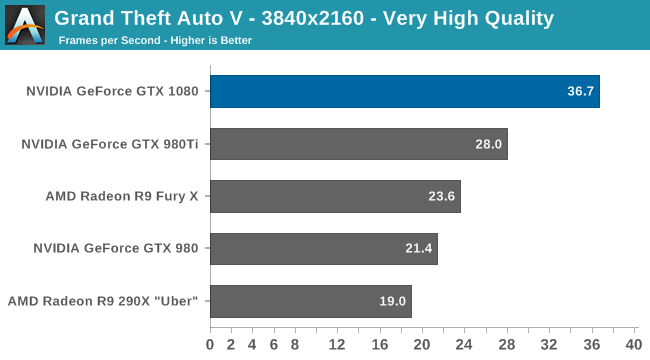
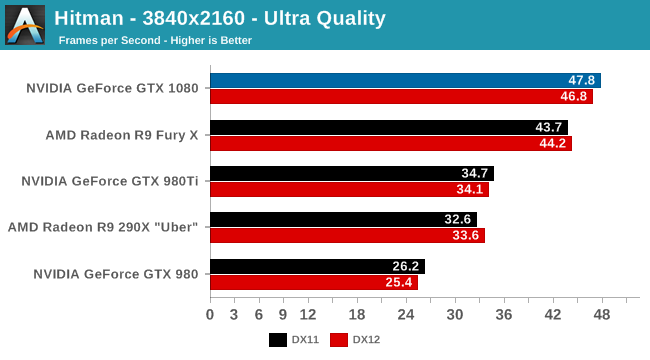
As the first high-end card of this generation to launch, NVIDIA gets to set the pace for the market. At the risk of being redundant the GTX 1080 is now the fastest single-GPU card on the market, and even at 4K it wins at every single gaming benchmark, typically by a good margin. In practice we’re looking at a 31% performance lead over GTX 980 Ti – the card the GTX 1080 essentially replaces – with a similar 32% lead over AMD’s Radeon R9 Fury X. Meanwhile against the slightly older GTX 980, that gap is 70%.
On a generational basis this ends up being very close to the 74% jump in 4K performance going from the GTX 680 to GTX 980. And although the pricing comparison is not especially flattering for NVIDIA here, it should be evident that NVIDIA isn’t just looking to sell GTX 1080 as an upgrade for high-end Kepler cards, but as an upgrade for GTX 980 as well, just 20 months after it launched.
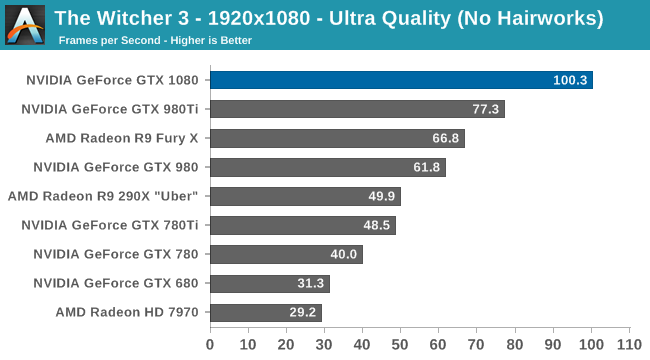
I also wanted to quickly throw in a 1080p chart, both for the interest of comparing the GTX 1080 to the first-generation 28nm cards, and for gamers who are playing on high refresh rate 1080p monitors. Though this will of course vary from game to game, roughly speaking the GTX 1080 should be 3x faster than the GTX 680 or Radeon HD 7970. This is a good reminder of how architectural efficiency has played a greater role in past years, as this is a much larger gain than we saw jumping from 55nm to 40nm or 40nm to 28nm, both of which were much closer to the historical norm of 2x.

Meanwhile when it comes to power, temperature, and noise, NVIDIA continues to execute very well here. Power consumption under Crysis 3 is some 20W higher than GTX 980 or 52W lower than GTX 980 Ti, generally in line with NVIDIA’s own TDP ratings after accounting for the slightly higher CPU power consumption incurred by the card’s higher performance. The end result is that GTX 1080 is a bit more power hungry than GTX 980, but still in the sweet spot NVIDIA has carved out in the gaming market. Broadly speaking, this amounts to a 54% increase in energy efficiency in the case of Crysis 3.
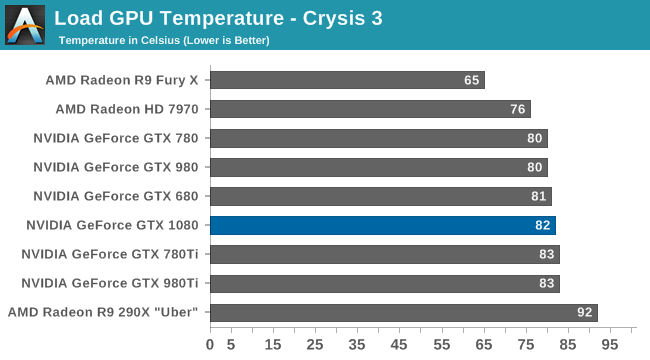
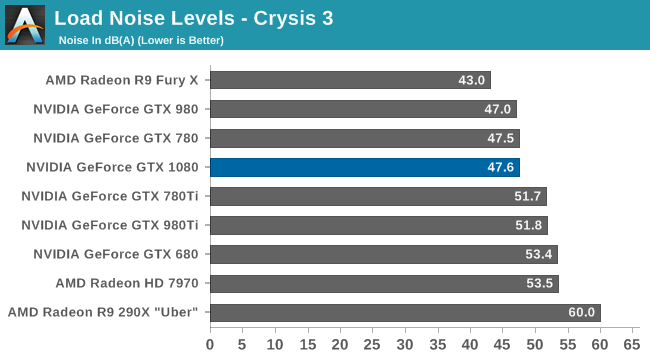
Otherwise from a design perspective the GTX 1080 Founders Edition carries on from NVIDIA’s high-end GTX 700/900 reference design, allowing NVIDIA to once again offer a superior blower-based solution. NVIDIA’s temperature management technology has not changed relative to Maxwell, so like their other cards, the GTX 1080 tops out in the low 80s for load temperature. More significantly, at 47.5 db(A) load noise, the card is on par with the GTX 780 and half a dB off of the GTX 980.
Ultimately NVIDIA has designed the GTX 1080 to be a drop-in replacement for the GTX 980, and this data confirms just that, indicating that GTX 1080’s much higher performance comes with only a slight increase in power consumption and no meaningful change in temperatures or acoustics.


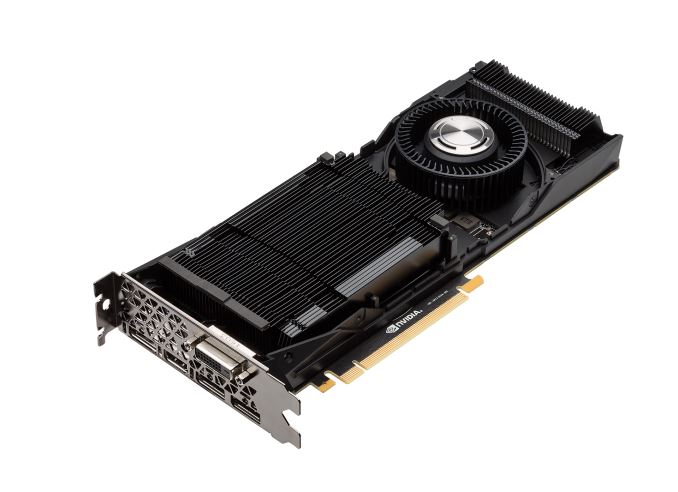








262 Comments
View All Comments
jasonelmore - Tuesday, May 17, 2016 - link
lol the euro has dropped in value so much its piratically on par with the dollar. Blame your goverment for VAT no currency exchange.vil2 - Tuesday, May 17, 2016 - link
No. 699 $ is 617 euros. Add roughly 20% VAT and it makes 740 €, not 799.JeffFlanagan - Tuesday, May 17, 2016 - link
>Even though this card makes my 970 look pathetic...I feel good about that. I have to disable SLI in my dual 970 system for VR, so switching to one powerful card will be a big improvement.
Agent_007 - Tuesday, May 17, 2016 - link
"GTX 1080 should be 3x faster than the GTX 980 or Radeon HD 7970"980 -> 680
Golgatha - Tuesday, May 17, 2016 - link
So the recent sale price for the GTX 980 Ti at $500 is where it should be priced considering the performance and cost of the GTX 1080 is about an equal percentage higher by both metrics. That's personally not what I'd call a good value, but when you have a monopoly at the high end of the graphics card spectrum, that's about what I'd expect in terms of pricing.strafejumper - Tuesday, May 17, 2016 - link
benchmark I was looking at (doom at 1440p @ guru3d) had 1080 21.7% faster than 980 tiNewer prices of 980 ti ($500) vs 1080 ($600) are 20% higher
seems on point
mr_yogi - Tuesday, May 17, 2016 - link
Are all the comparison cards using the drivers they were originally reviewed with or using the latestdrivers available?Ryan Smith - Tuesday, May 17, 2016 - link
Latest available. 368.13 for the NVIDIA cards and 16.5.1 for AMD.mr_yogi - Tuesday, May 17, 2016 - link
Many thanks :)just4U - Wednesday, May 18, 2016 - link
Which is likely why we see a marked improvement in some cards performances overall. I'd have expected some of those to be further behind than they actually are.